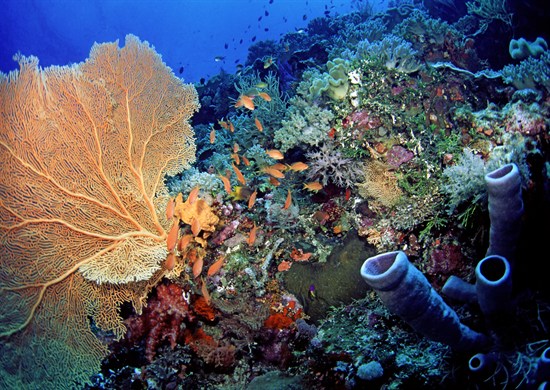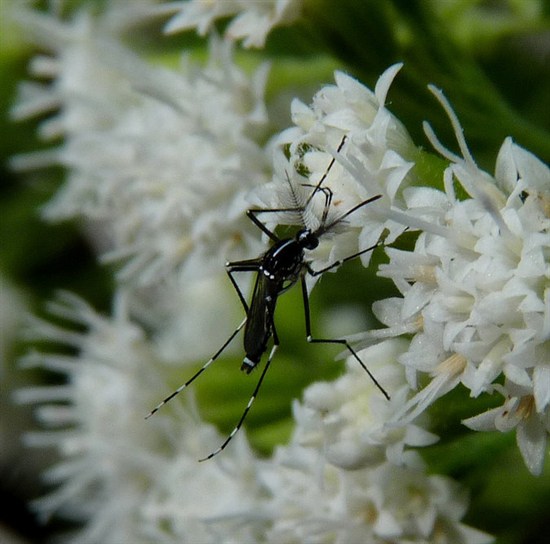Roz Pidcock
31.03.2014 | 12:30pmA landmark new report on climate change came out earlier today, looking at the impact of past and future warming on ecosystems and human society. Here’s our rundown of the report’s main messages, on everything from fisheries to flooding.
We’re already seeing the impacts of climate change
That the planet is warming is not in doubt. Global temperature has risen by 0.85 degrees over the industrial period (1880 to date). We’re already seeing the impacts of this amount of warming over much of the land and oceans.
The Summary for Policymakers ( SPM) says some risks of climate change are considerable at 1 or 2°C above preindustrial levels and that further warming will “increase the likelihood of severe, pervasive, and irreversible impacts.”
Greater confidence in the extent and pace of climate change since the last assessment report comes from having more data and new ways of analysing earlier measurements.
Our weather will get more extreme
Climate change is already leading to more hot days and nights and fewer cold days and nights. Heatwaves have become more common and more intense in the last half century.
In general, wet places are set to get wetter, and dry places to get drier. Some parts of the world are already seeing more frequent and more serious drought, leading to a reduction in water availability.
In other regions, changing rainfall patterns and melting glaciers are altering river flow, causing a rise in flooding. The SPM says:
“The fraction of global population experiencing water scarcity and the fraction affected by major river floods increase with the level of warming in the 21st century.”

Climate change is set to up the odds of the sort of extreme weather the UK experienced this winter, scientists say.
Sea level rise is projected to greatly increase the risk of flooding in low-lying and coastal regions, particularly in East, South and Southeast Asia.
The most visible impacts are on the natural world
Warming is causing marine and terrestrial species to alter their seasonal behaviour and to migrate into new geographical territories. As surface waters warm, fish and invertebrates are moving towards the poles or into deeper water in search of cooler temperatures.
Redistribution of fish populations will have consequences for food security and livelihoods in regions that depend on marine resources. Falling productivity, ocean acidification and overfishing will all contribute to the declining health of the oceans out to 2100.
If species can’t move or adapt fast enough, this will lead to local extinctions. The SPM says:
“A large fraction of both terrestrial and freshwater species faces increased extinction risk under projected climate change during and beyond the 21st century, especially as climate change interacts with other stressors, such as habitat modification, over-exploitation, pollution, and invasive species”.
Ecosystems under pressure may cross critical thresholds known as “tipping points”, leading to abrupt and drastic changes. The precise point at which tipping points are triggered is uncertain, but there are already early warning signs of the Arctic and coral reef systems undergoing irreversible regime shifts.

Coral reefs and Arctic ecosystems are already showing early warning signs of irreversible regime shifts.
Climate change is bad news for food security
Moderate warming in tropical and temperate regions, like North America and Europe, will see decreases in the major crop yields – wheat, rice and maize, though individual locations may see short term benefits. After 2050 the risk of more severe yield impacts increases. The SPM says:
“Based on many studies covering a wide range of regions and crops, negative impacts of climate change on crop yields have been more common than positive impacts”.
Impacts on food production are likely to hit rural communities hardest and scientists expect a greater risk of malnutrition as food production decreases in poor regions.
Changes in food production and quality will have consequences for market prices and food security. The potential for food shortages will be made worse by crop demand increasing 14 per cent by 2050.
Climate change has other consequences for human health
The number of people dying of heat-related illnesses has increased in some regions, and will continue to rise as the global population escalates.
As temperatures rise, there will be a modest reduction in the number of people dying from cold in some areas, which will offset some of the heat-related deaths.
Changes in temperature, sea level rise and rainfall patterns have changed the distribution of disease vectors, such as biting insects.

As southern Europe warms, the Asian Tiger mosquito is moving towards northern countries in search of more suitable habitat.
The frequency of injury, disease and death due to more intense storms, floods and fires are expected to increase in the next few decades. While climate change is and will continue to be a contributor to poor global health, bigger causes of ill-health exist around the world.
How much will climate change cost?
Economists have attempted estimated the economic cost of climate change by assessing the costs incurred as a result of various different impacts. Existing estimates of the cost of 2.5 degrees of warming are between 0.2 and 2 per cent of GDP.
The real economic costs of climate change will be higher than estimates suggest, however. This is because they can’t include impacts without a monetary value attached, such as the decline in biodiversity and loss of ecosystem services. The SPM says:
“Global economic impacts from climate change are difficult to estimate. Economic impact estimates completed over the past 20 years vary in their coverage of subsets of economic sectors and depend on a large number of assumptions, many of which are disputable”.
Another important point is that very little is known about the economic impacts above three degrees. The risks become much higher above three degrees because of the potential for a large and irreversible sea-level rise from ice sheet loss, the report says.
Who will be most vulnerable?
The impacts of climate change are not evenly distributed across the world. Developing countries and rural communities are likely to be the hardest hit because of impacts to food production, livelihoods and local economies. The SPM says:
“People who are socially, economically, culturally, politically, institutionally, or otherwise marginalized are often highly especially vulnerable to climate change”.
Climate change can exacerbate social and economic inequalities, making vulnerable populations even more so. As more people move to cities, the risks will become more concentrated for a growing proportion of the global population.
People living in places affected by violent conflict or where access to food and water is already limited. In some places, populations might be exposed to several impacts at the same time – these are known as climate impact hotspots.
Adaptation can help manage risks from climate change
Some of the risks posed by climate change can be managed through adaptation. This involves minimising exposure to the physical impacts while at the same time reducing vulnerability through introducing climate-resilient infrastructure, ecosystem restoration programmes, better water management, social and sustainable development programmes, and livelihood diversification.
For example, the new IPCC report says adaptation would lead to an overall gain in crop yield of about 15 to 18 per cent of current yields compared to the non-adaptation case, with the greatest benefits for wheat, rice and maize in temperate regions rather than tropical ones.
Adaptation can have co-benefits in terms of alleviating poverty and enhancing development, particularly in developing nations. There are still barriers to climate change adaptation, particularly in developing countries, mainly because of a lack of access to human and economic resources.
Making decisions in an uncertain world
The report highlights there are a number of directions future climate change and societal development could take. And the actions we take now determine how much we’re able to narrow those possibilities.
The underlying message of the report is that uncertainty about the scale, timing and location of physical impacts shouldn’t be a reason to delay on climate change action.
Adaptation can reduce the impacts of climate change but it can’t avoid them altogether. So mitigation of carbon dioxide emissions is important alongside adaptation, to reduce the scale of climate impacts.
As well as reducing the cost of damage, a low emissions pathway would also lower adaptation costs.
The final part of the IPCC report – from Working Group 3 – deals with the topic of mitigation, and is due for release in April 2014.

